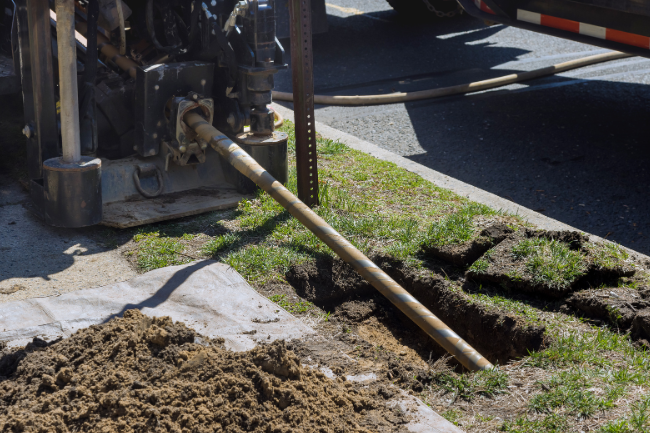What Does Pipe Replacement Cost? Tips for Homeowners
Posted by William Heinselman on
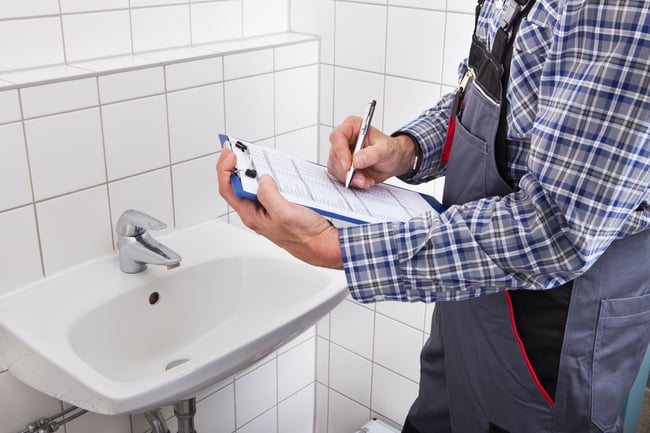
If your home is like many in Sacramento, odds are that it’s a little over 40 years old—placing its construction in the mid-to-late 70s or early 80s. Many homes built in the seventies are due for repiping because of the outdated materials used to build plumbing systems back then (like galvanized steel or iron).
Even if built with better piping materials, such as copper, many older homes may experience plumbing problems because of how old their piping is. Single pipe replacement costs can vary anywhere from a couple hundred to thousands of dollars, accounting for everything from the P trap beneath your bathroom sink to the sewer line below your yard.
What Factors Affect Pipe Replacement Cost?
The average cost to repipe a house varies. What is involved in repiping a house that affects the cost? Here are a few of the major factors:
- The Size of the Building. Larger homes with more piping to replace will naturally cost more to fix than smaller homes with simpler systems. So, prices may be expressed as the “cost of plumbing a house per square foot.”
- The Material Being Used for Replacing Water Pipes in a House. Your choice of new piping material can have a large impact on the cost of replacing plumbing in an old house. Generally speaking, plastics cost less upfront than copper—but you also have to consider the useful life of each type of pipe. CPVC pipes are the least expensive to replace, but they are also susceptible to leaks.
- The Method Used to Replace Water Pipes. There are several different ways to handle the repair/replacement of water pipes in a home. Manually removing and replacing pipes and digging deep trenches is a slow and expensive method of replacing mains—but using trenchless technologies can help streamline the process and reduce overall costs.
- How Extensive the Replacement Work Needs to Be. Some plumbing companies might quote a lower rate if they’re only replacing the visible piping and not the ones hidden behind the walls and below the floors. This is not generally possible when dealing with homes that have lead pipes, as the lead is toxic and needs to be replaced as soon as possible.
Some people have asked: “Does it cost more to replace galvanized pipes in a house than other types of pipes?” Generally speaking, the cost to replace galvanized pipes in a house will be roughly the same as the cost of replacing other types of pipes. The difference is that some plumbing companies might only replace the visible piping to reduce costs.
However, it is often best to replace the entire plumbing system all at once, as old pipes might be more prone to leaks and other issues that could raise your costs in the long term. Leaving certain plumbing problems unattended could cause damage to your home.
The three most commonly used materials when re-piping homes are copper, cross-linked polyethylene pipe (PEX), and Chlorinated Polyvinylchloride (CPVC). Each material has its own unique advantages and disadvantages for repiping homes.
Copper Pipe Replacement Cost
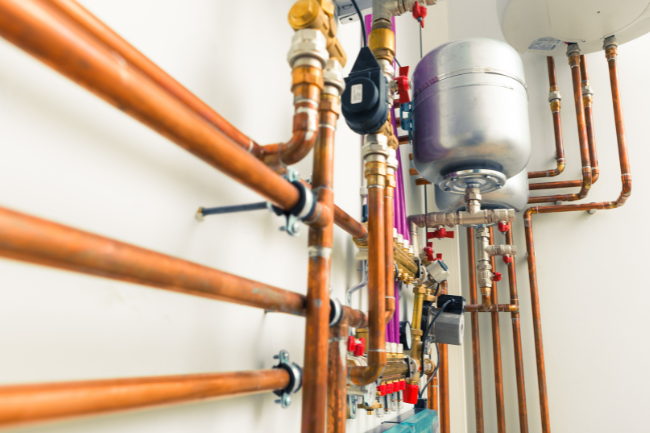
When compared to the average cost of re-plumbing a house, copper pipe tends to be on the extreme high end—costing several times more per linear foot than PEX or CPVC pipes. While the cost per foot can vary depending on the price of copper at the time the pipe is ordered and the installation method used, a price between $2 and $4 per foot is pretty typical—though it can spike higher.
That’s just the cost of the materials. The actual installation work may be even costlier. A relatively inexpensive copper pipe repiping job may cost as little as $8,000. However, it can easily reach five figures (as much as $20,000 or more) depending on the size of the building and how extensive the replacements are.
Pros and Cons of Copper Pipe
Pros:
- Highly durable pipes that last a long time.
- Suitable for use both indoors and outdoors.
- Easy to measure since the pipe remains rigid.
Cons:
- Expensive.
- Prone to bursting in freezing weather (though Sacramento doesn’t usually reach freezing temperatures, it can get close at several times of the year).
PEX Pipe Replacement Cost
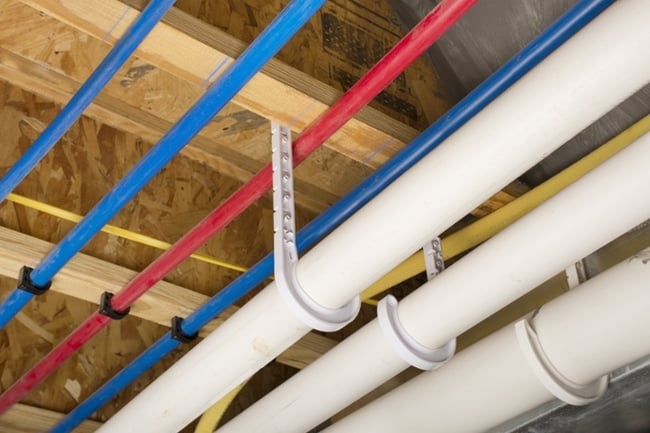
At costs of $0.50 to $2 per foot, PEX pipe is much less expensive than copper pipe. This results in a lower average cost of plumbing a house per square foot than using copper pipes—anywhere from a few thousand dollars to around $15k for a really comprehensive job.
Installing PEX pipe requires specialized tools—though a professional Sacramento plumbing service can spread the cost of these tools out amongst several plumbing jobs, so that shouldn’t make too large of an impact on the average cost of re-plumbing a house with PEX pipe.
Pros and Cons of PEX Pipe:
Pros:
- Very flexible and durable for indoor applications.
- Less costly than copper pipe.
- Fairly easy and quick to install.
Cons:
- Not suited for use outdoors or where the pipe may be exposed to UV light (UV light damages PEX).
- Constriction or expansion of pipe can throw off measurements (not usually a problem for experienced plumbers).
- Rodents and other animals have been known to chew on PEX pipes, causing leaks.
CPVC Pipe Replacement Cost
Of all the piping materials in this article, CPVC pipe is the least expensive on average—making it a good option for those on a tight budget. At the most, CPVC pipes generally cost around $1 per foot—which is half the max cost of PEX.
Unlike PEX, CPVC is a rigid material that is easy to measure and cut. It is also available in a variety of sizes that are suitable for a range of different uses—everything from water mains to small in-house feeds for sinks and appliances. The typical cost for replacing water pipes in a house with CPVC is a few thousand dollars (unless the job is especially large or labor-intensive).
Pros and Cons of CPVC Pipe:
Pros:
- Inexpensive.
- Easy to install.
- Highly resistant to corrosion from water and contaminants.
Cons:
- Inconsistent manufacturing quality.
- Prone to bursting.
Galvanized Steel Pipe Replacement Cost
An alloyed metal, galvanized steel pipes offer more strength than typical piping options. They are preferable for pipe systems operating under higher pressures. Galvanization is the process of applying a protective layer of zinc to the steel, preventing rust. However, acidic chemicals can eventually affect the integrity of galvanized steel pipes
Galvanized pipe is pricier than other options due to the metals used in the alloy and is roughly $8 a linear foot.
When replacing copper, galvanized, or PVC pipe with the same, demolition of walls and floors may be necessary. This is an added cost when you replace plumbing pipes, and it may be necessary to hire another tradesperson to make repairs for damages caused when replacing plumbing pipes.
Pros and Cons of Galvanized Steel Pipes:
Pros:
- Resistant to high pressure
- Straightforward inspection
- Rust resistant
Cons:
- Can corrode from the inside out
- Water contamination from corrosion
So, How Much Does Pipe Replacement Cost?
The average cost to replace plumbing in an old house has a fairly wide strike zone. Depending on how extensive your repiping is (such as whether you’re redoing the whole house or just the connection between the meter and the home) and the materials you use, your cost to replace your pipes could be anywhere from a couple of thousand dollars to tens of thousands of dollars.
Of course, there is also the option of re-lining your existing pipes rather than replacing them. Using trenchless technology is far less labor and resource-intensive than trying to dig out old pipes. This is a great way to extend the useful life of hard-to-reach water pipes in your home to minimize the cost of repiping.
At Express Sewer & Drain, we make the pipe replacement process as painless and cost-effective as possible. If you have questions regarding our pipe replacement services, just give us a call!
Reach out to the Express Sewer & Drain team today to learn more.
Topics: Trenchless Technology, Home Plumbing

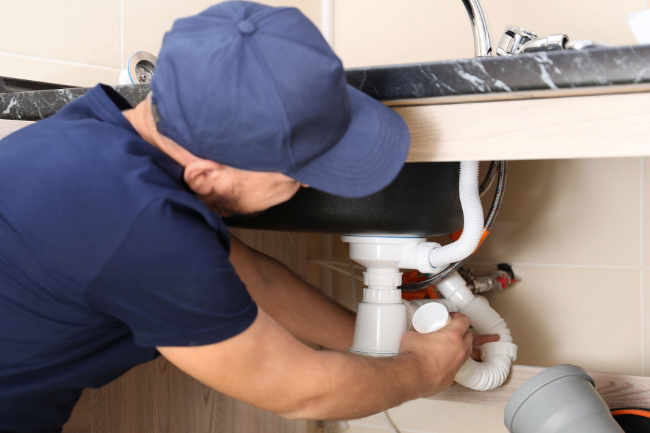
![Repiping Your Sacramento Home [6 Steps]](https://www.expresssewer.com/hs-fs/hubfs/plumbing%20tools%20and%20blueprints.jpeg?width=550)
